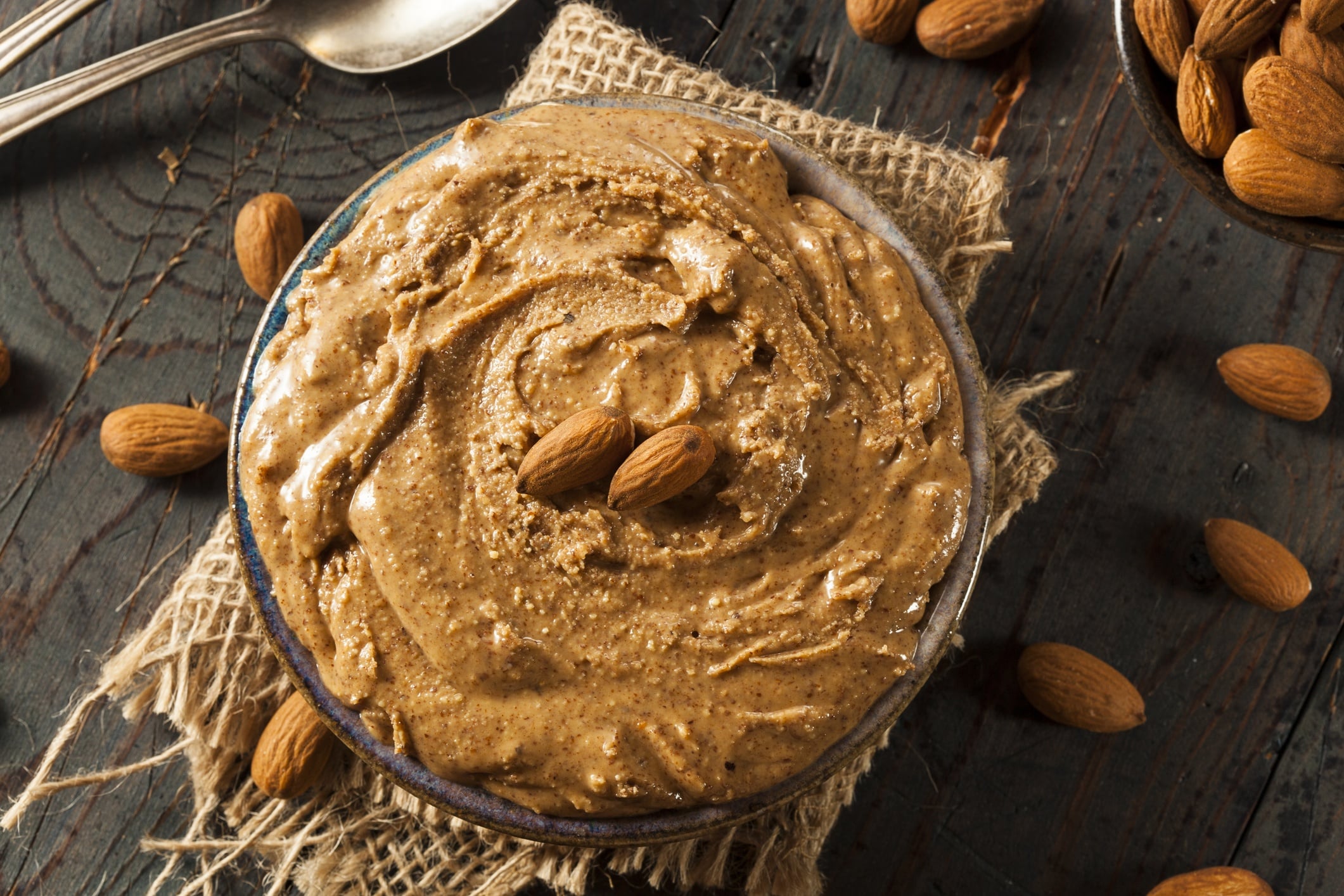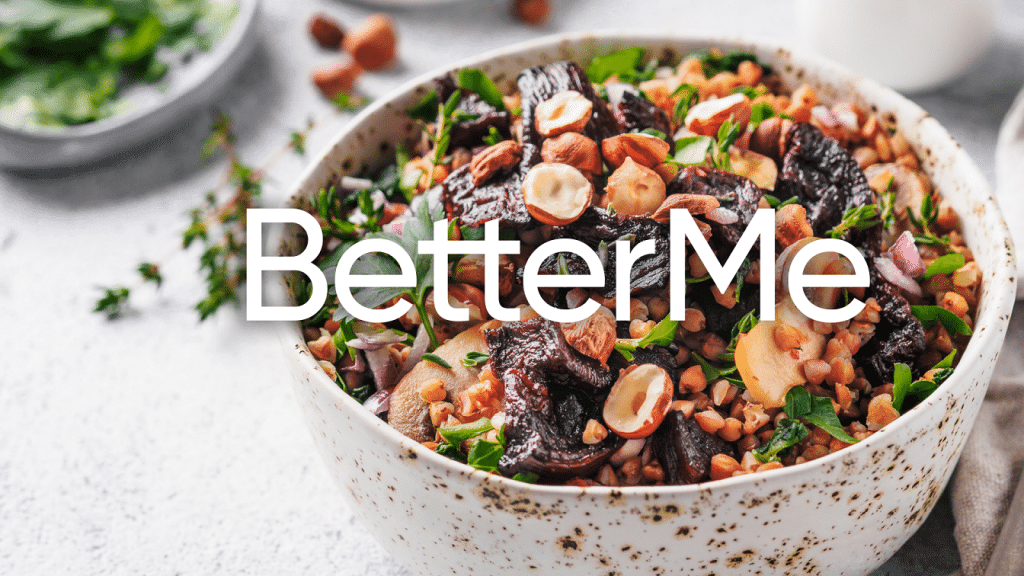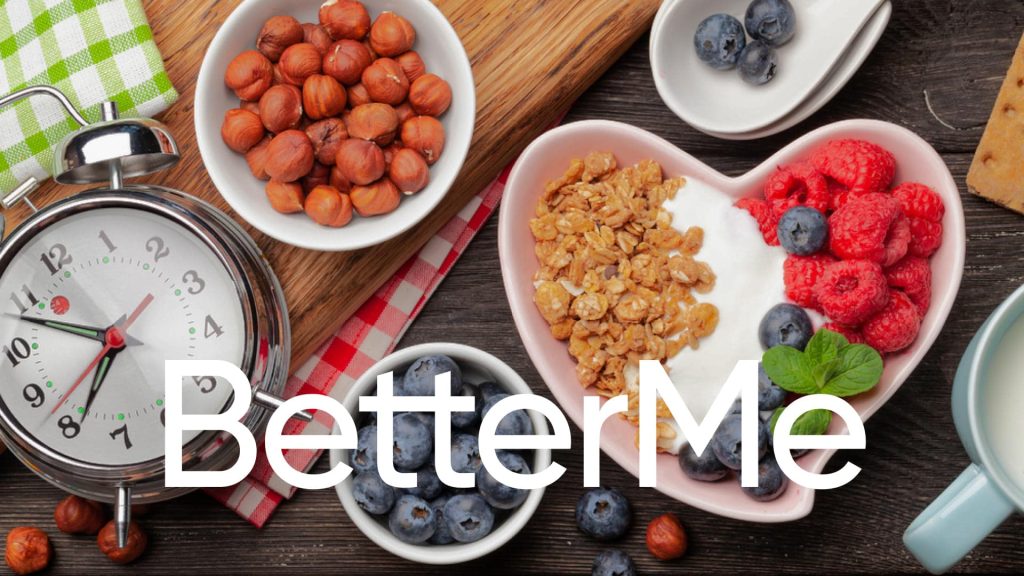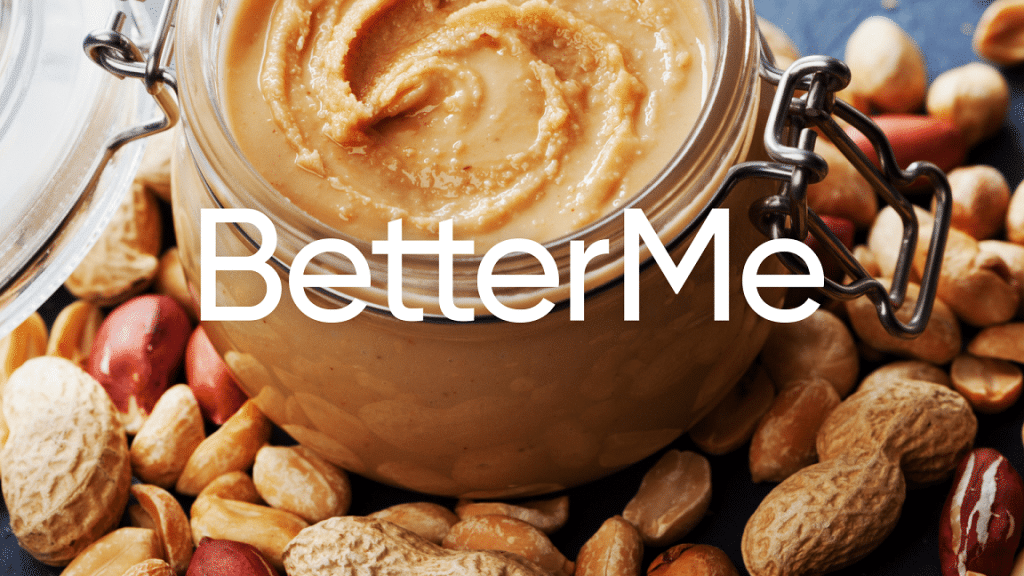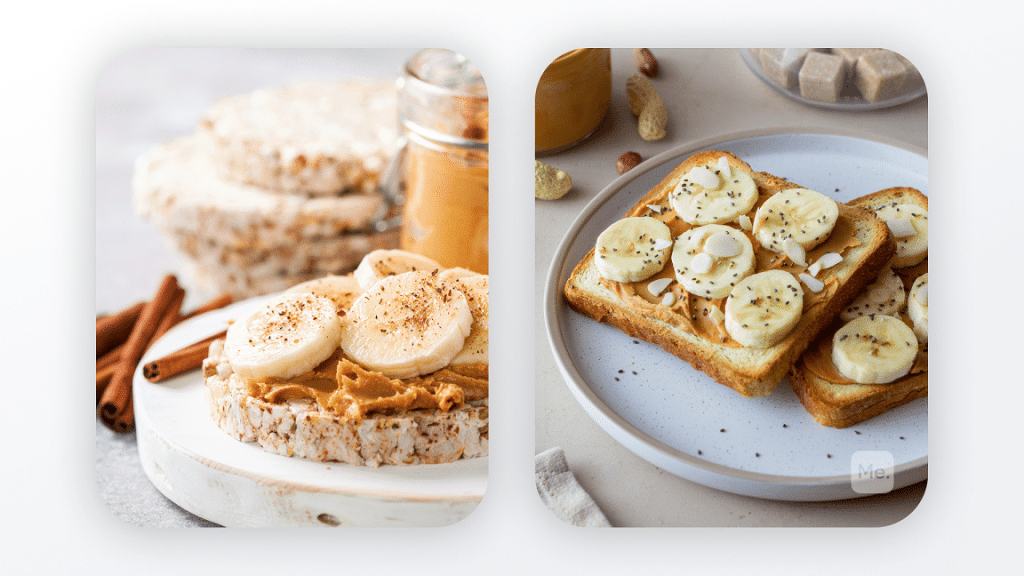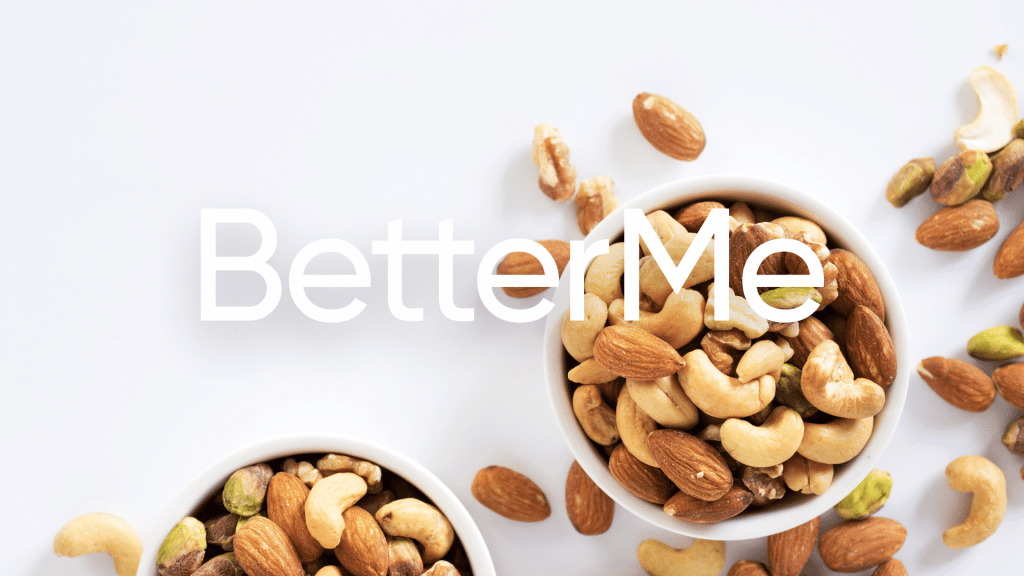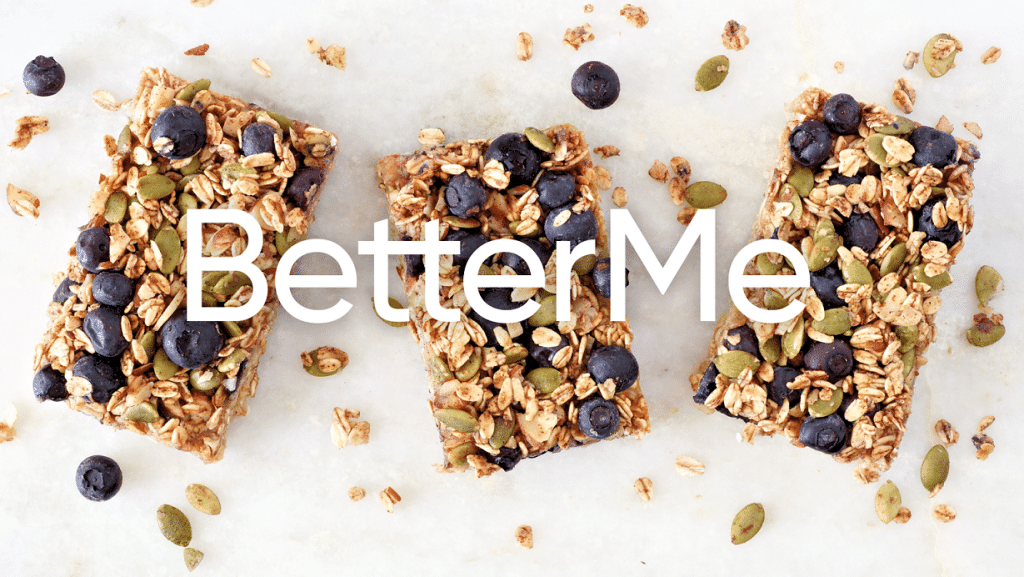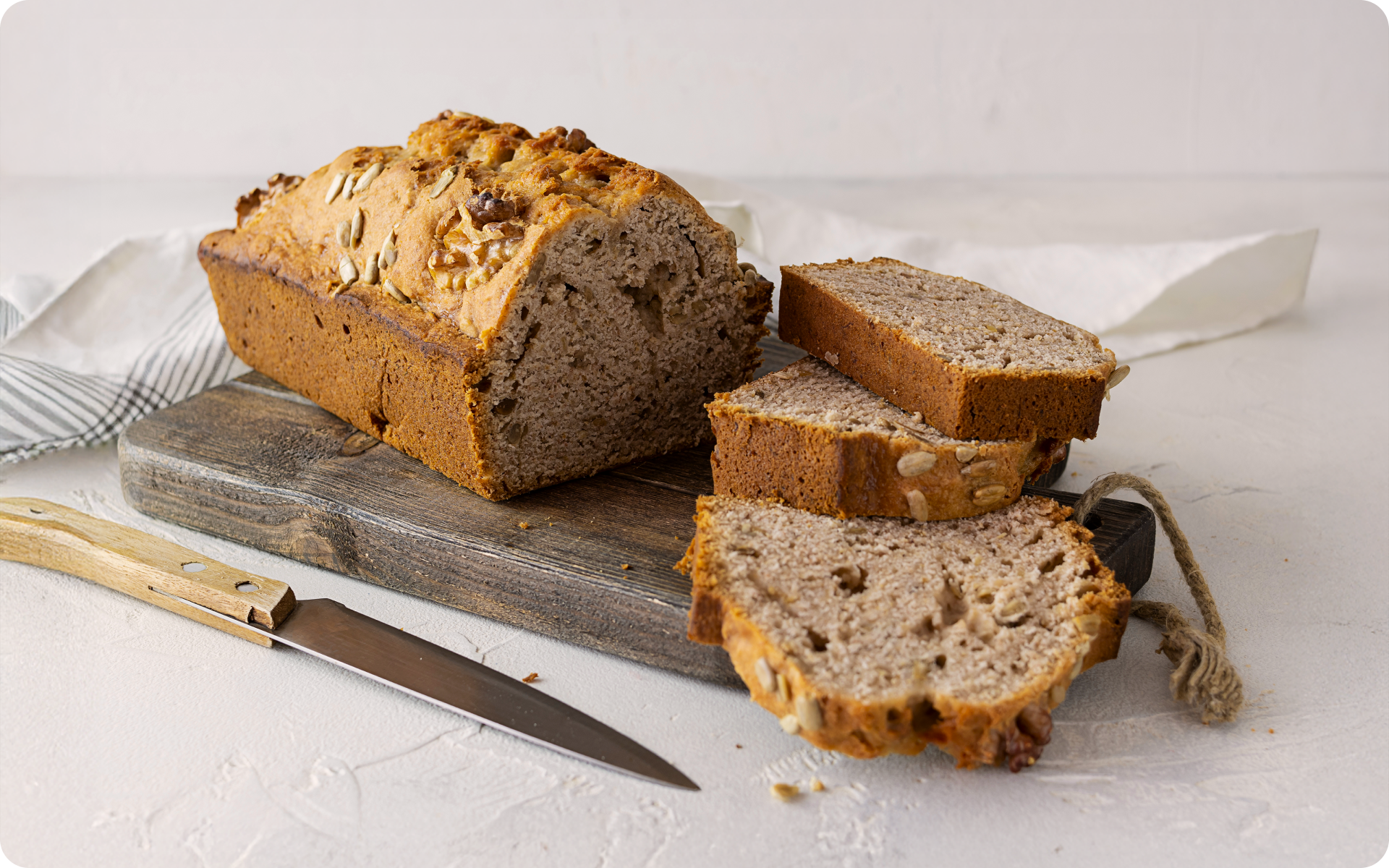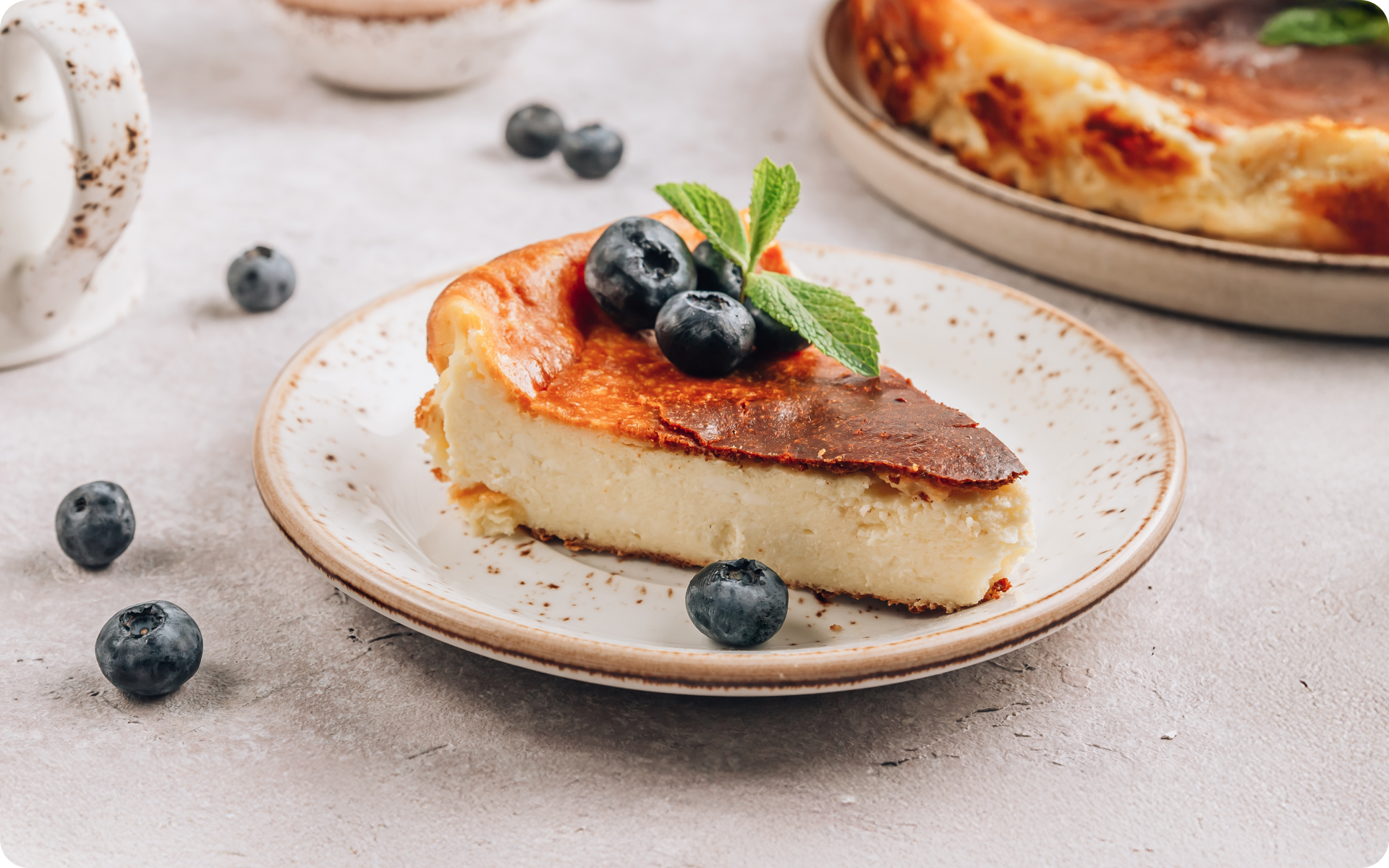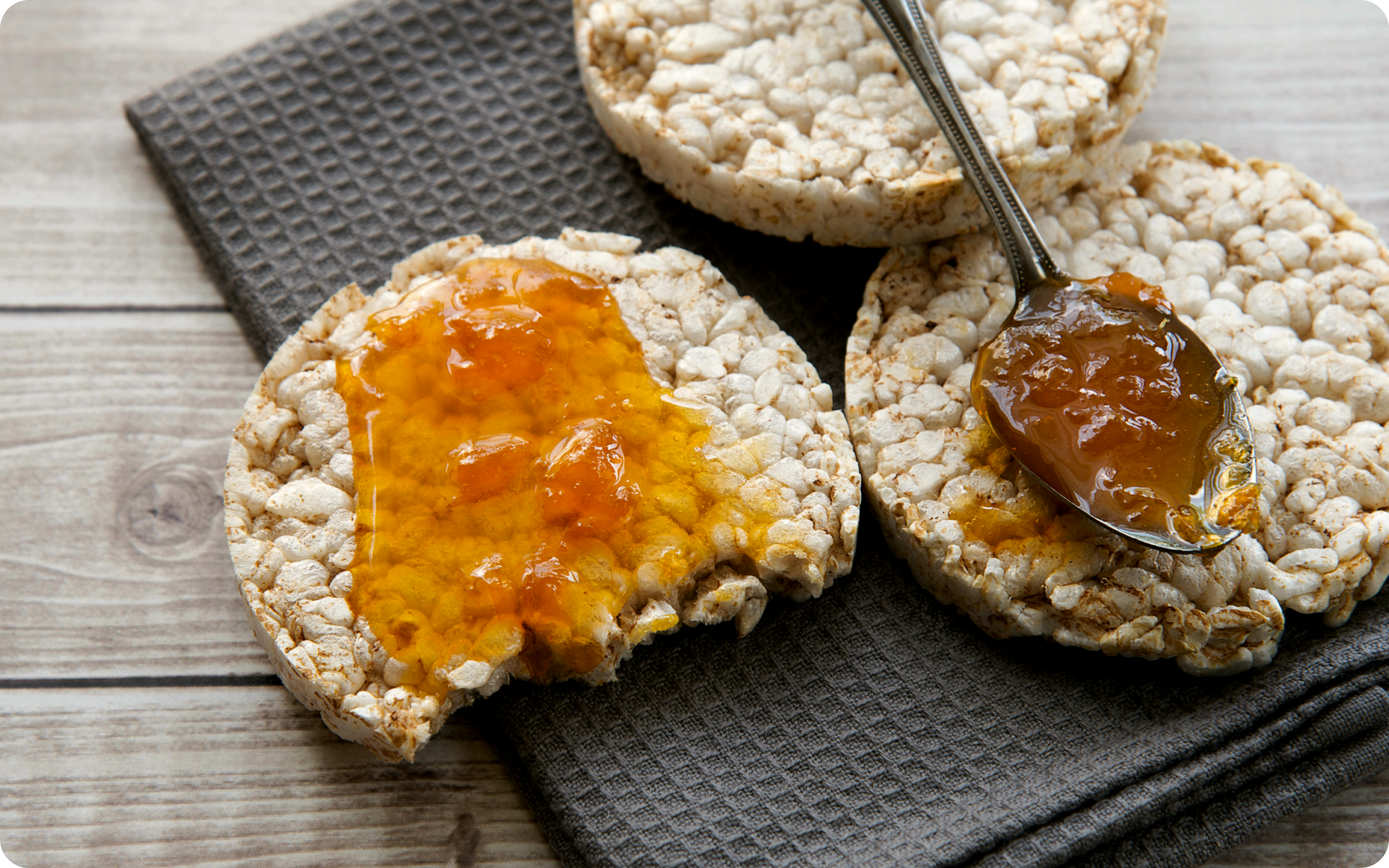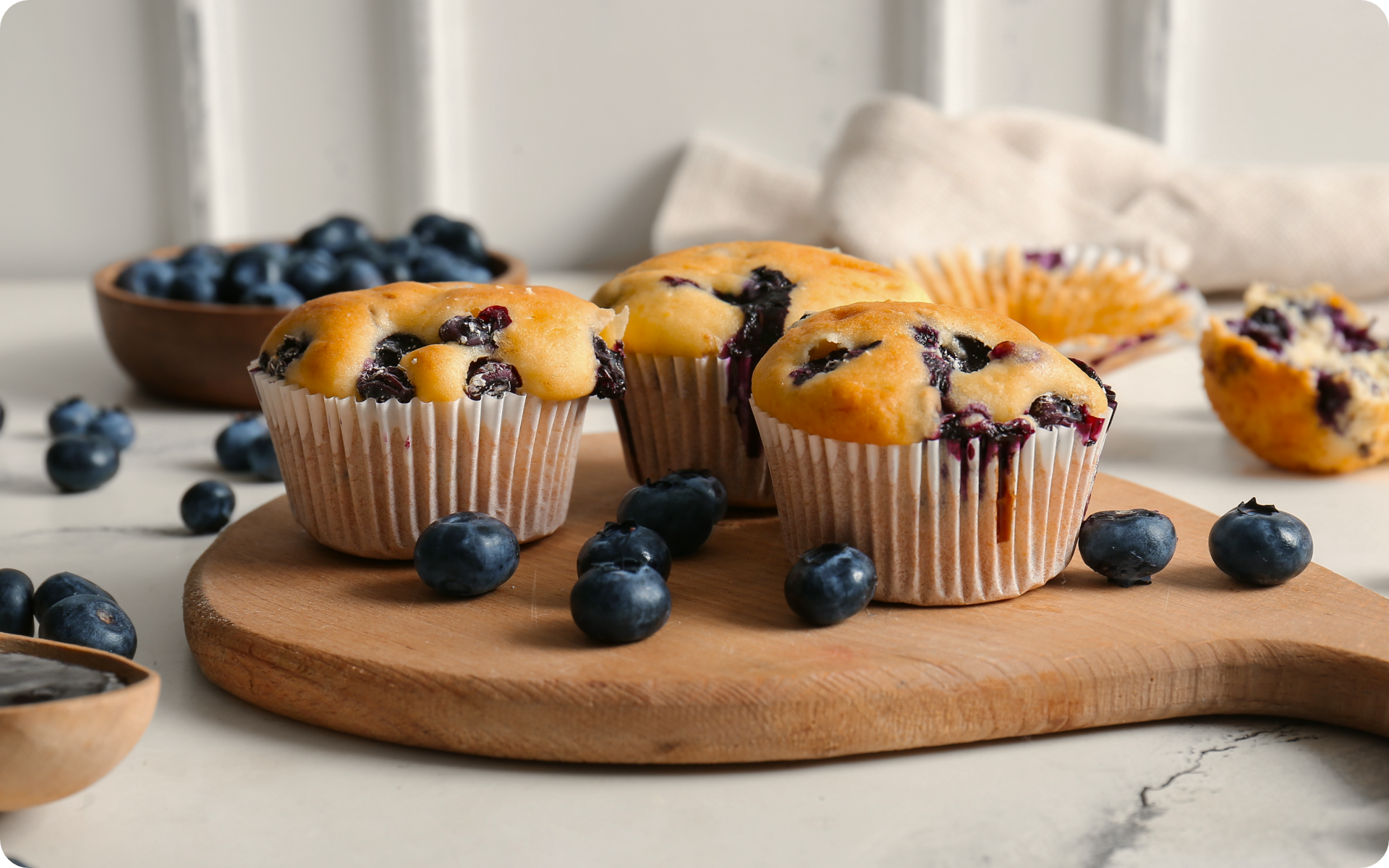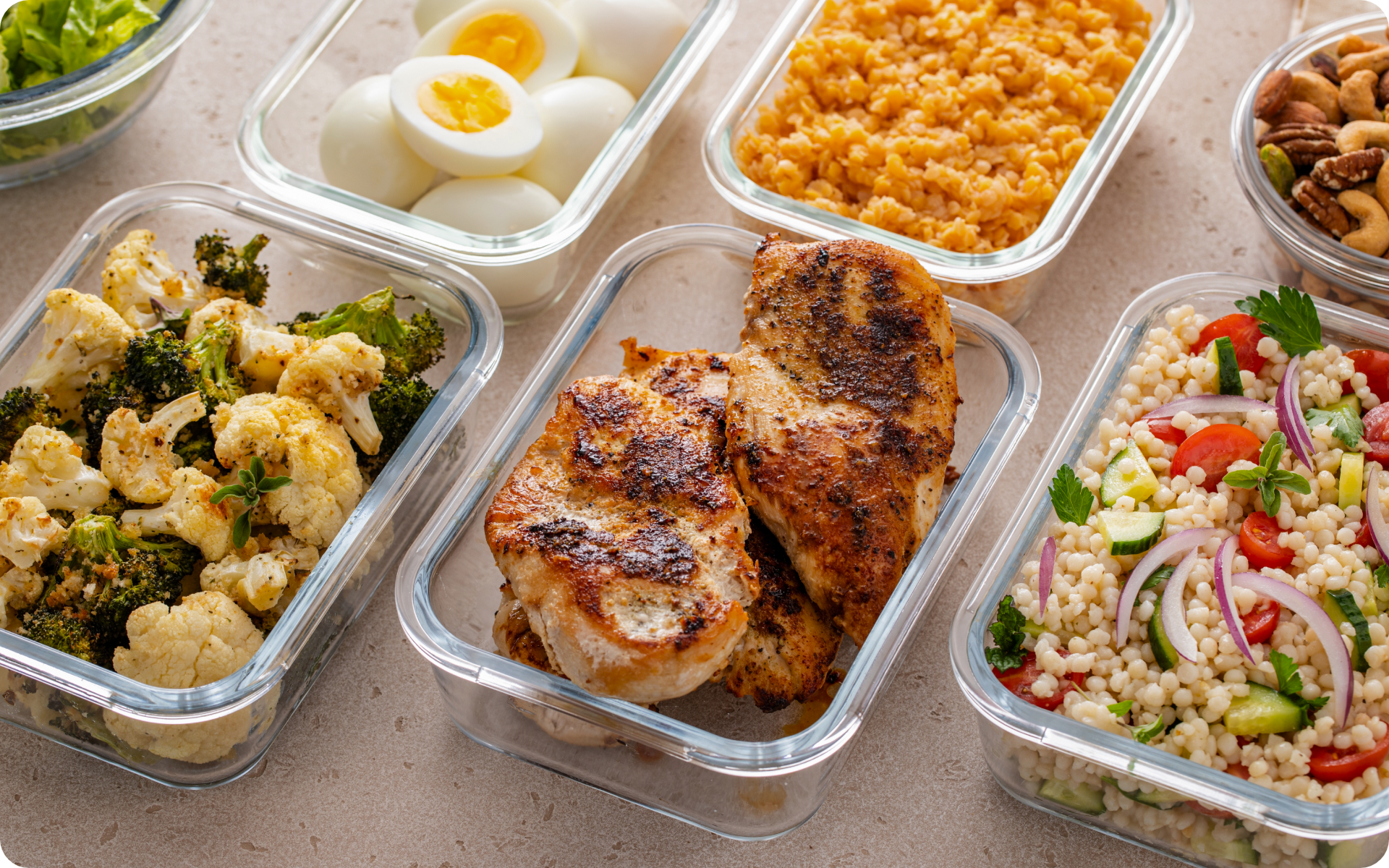Peanut butter is the OG when it comes to nut butter—anyone who grew up eating PB&J sandwiches can attest to that. However, in recent years, almond butter has been gaining popularity as a healthier alternative to peanut butter. So, what’s the difference between these 2 kinds of nut butter? Is one actually better for you than the other? In this article, we’ll reveal why you may want to choose one over the other. We’ll review the benefits and drawbacks of each type of nut butter, as well as their nutrient profiles. By the end, you’ll know everything there is to know about almond butter vs. peanut butter— and which one is right for you.
Get your personalized
meal plan!
What Is Peanut Butter?
Peanut butter is a spread made from ground, roasted peanuts. It’s typically smooth in texture, although you can also find crunchy varieties. Peanut butter is a popular food all around the world and has been eaten for centuries. In fact, it was first created in the late 1800s as a protein-rich food for those who couldn’t afford meat.
Peanut butter is a good source of protein, healthy fats, vitamins, and minerals. It’s also relatively low in carbohydrates (7). Thanks to its creamy texture and nutty flavor, peanut butter makes a delicious addition to many different recipes.
What Is Almond Butter?
Like peanut butter, almond butter is a spread made from ground, roasted nuts. However, as you might’ve guessed from its name, almond butter is made from almonds instead of peanuts.
Almond butter shares many of the same nutrients as peanut butter. It’s a good source of protein, healthy fats, vitamins, and minerals (1). Just like peanut butter, almond butter is also relatively low in carbohydrates.
So, now that you know a little bit about each type of nut butter, let’s compare their nutrient profiles side-by-side.
Read More: Energy Balls: The Best Ingredients To Beat The Midday Energy Slump
Almond Butter Vs. Peanut Butter: Nutrient Profile
Both almond butter and peanut butter are good sources of nutrients.
Here’s a closer look at the nutrient profiles of each:
Almond Butter
16 grams of almond butter (one tablespoon) contains the following nutrients:
- Protein: 3.4 grams
- Fat: 8.9 grams
- Carbohydrate: 3.0 grams
- Fiber: 1.6 grams
- Sugar: 0.7 grams
- Saturated fat: 0.7 grams
- Monounsaturated fat: 5.2 grams
- Polyunsaturated fat: 2.2 grams
Peanut Butter
16 grams of peanut butter (one tablespoon) contains the following nutrients:
- Protein: 3.6 grams
- Fat: 8.2 grams
- Carbohydrate: 3.6 grams
- Fiber: 0.8 grams
- Sugar: 1.7 grams
- Saturated fat: 1.7 grams
- Monounsaturated fat: 4.2 grams
- Polyunsaturated fat: 2.0 grams
Almond Butter Vs. Peanut Butter: Calories
Nut butter is generally high in calories— and almond butter and peanut butter are no exception.
One tablespoon of almond butter contains approximately 98 calories while an equal amount of peanut butter contains approximately 96 calories.
The slight difference in calories is due to the different amounts of fat and protein in each type of nut butter. Almond butter has very slightly more fat than peanut butter, while peanut butter has a very slightly higher protein content.
So, if you’re watching your calorie intake, the difference between the two is negligible. r What you may want to keep in mind with either is to limit your portion size to 1 tablespoon.
Almond Butter Vs. Peanut Butter: Protein
Both almond butter and peanut butter are good sources of plant-based protein. One tablespoon of almond butter contains 3.4 grams of protein while an equal amount of peanut butter has 3.6 grams.
Protein is an important nutrient that helps your body repair and grow cells, produce enzymes and hormones, and provide energy. It’s especially important for athletes and people who exercise regularly, as protein helps build and repair muscle tissue (6).
Incorporate almond butter or peanut butter into your diet by spreading it on whole-wheat toast, adding it to oatmeal or smoothies, or using it as a dip for fruits and vegetables. Pairing it with low-calorie foods will help you reach your protein goals without going over your daily calorie budget.
Almond Butter Vs. Peanut Butter: Healthy Fat
Dietary fat is an important nutrient that your body needs for many different functions. Fat helps absorb vitamins, insulate your body, and protect your organs. It’s also a source of energy. In fact, fat provides more calories per gram than protein or carbohydrates (2).
There are 3 main types of fat: saturated, monounsaturated, and polyunsaturated. Saturated fat is the type of fat that in high amounts can raise your cholesterol levels and increase your risk of heart disease. Monounsaturated and polyunsaturated fats are considered to be “healthy” fats because including more of them and less saturated fat can help lower your cholesterol levels and may reduce your risk of heart disease (2).
Almond butter is slightly richer in healthy fats than peanut butter, but they are both great sources. A tablespoon of almond butter contains 5.2 grams of monounsaturated fat and 2.2 grams of polyunsaturated fat. Peanut butter has a slightly lower content of healthy fats with 4.2 grams of monounsaturated fat and 2.0 grams of polyunsaturated fat per tablespoon.
Peanut butter has slightly more saturated fat than almond butter. If you’re looking for nut butter that’s a little bit higher in healthy fats and lower in saturated fat, you can choose almond butter over peanut butter. However, the difference is small and they are both still great sources of healthy fats while being considered low in saturated fat.
Almond Butter Vs. Peanut Butter: Fiber
Fiber is an important nutrient that helps keep you regular and may also reduce your risk of heart disease, obesity, and type II diabetes. Your gut health also benefits from a high-fiber diet (3).
Almond butter is a good source of fiber, with 2.5 grams per tablespoon. Peanut butter, in comparison, has slightly lower fiber content, with 0.8 grams per tablespoon.
Incorporating more fiber into your diet is easy with either almond butter or peanut butter. You may spread either one on whole-wheat toast, add it to oatmeal or yogurt, or use it as a dip for fruits and vegetables.
Looking for a way to break the vicious cycle of weight loss and tone up all the jiggly parts? Watch the extra pounds fly off and your muscles firm up with the BetterMe app!
Almond Butter Vs. Peanut Butter: Vitamins And Minerals
Almond butter is the star when it comes to vitamins and minerals.
Some of the vitamins and minerals found in almond butter include:
- Calcium (7 times more than peanut butter): A mineral that’s important for bone health.
- Vitamin E (3 times more than peanut butter): An antioxidant that helps protect your cells from damage.
- Iron (2 times more than peanut butter): A mineral that’s important for carrying oxygen in your blood.
Peanut butter still contains all three of these nutrients, just not as much as almond butter.
Both almond butter and peanut butter are good sources of other vitamins and minerals, including:
- Magnesium: A mineral that’s important for bone health, muscle function, and energy production.
- Potassium: An electrolyte that helps regulate fluid balance in your body.
- Phosphorus: A mineral that’s important for bone health.
- Biotin: A water-soluble vitamin that helps your body convert food into energy.
- Zinc: A mineral that’s important for immune function and wound healing.
Almond Butter Vs. Peanut Butter: Sugar
Natural, unsweetened almond butter and peanut butter don’t contain much sugar. Peanut butter has slightly more sugar than almond butter, but the difference is small. Unfortunately, many commercially-available brands of peanut butter and almond butter are loaded with added sugar and other unhealthy ingredients.
When you’re at the store, be sure to read the nutrition label carefully. Look for brands that contain only peanuts or almonds (or other nuts) and salt. Avoid brands that contain added sugar, hydrogenated oils, or other unhealthy ingredients.
Almond Butter Vs. Peanut Butter: Taste
Taste is subjective, but many people find that almond butter has a richer, more complex flavor than peanut butter. Peanut butter tends to have a creamier texture than almond butter.
If you’re looking for nut butter with a more intense flavor, choose almond butter over peanut butter. If you prefer a smoother, creamier texture, go for peanut butter. You may find you like both, perhaps just for different applications.
Almond Butter Vs. Peanut Butter: Price
Almond butter is usually more expensive than peanut butter. This is because almonds are more expensive than peanuts. If you’re on a budget, choose peanut butter over almond butter.
How To Make Your Own Nut Butter At Home?
Store-bought nut butters are convenient, but they may contain unhealthy ingredients like added sugar and hydrogenated oils. You can control the ingredients in your nut butter by making it at home.
Making nut butter at home is easy. All you need is a food processor and your favorite nuts. Simply place the nuts in a food processor and blend until they reach the desired consistency. Use the recipes below to make your own almond butter or peanut butter at home.
Almond Butter Recipe (5)
This easy almond butter recipe only requires 3 ingredients: almonds, a neutral-tasting oil, and salt.
Ingredients:
- 3 cups raw almonds
- Avocado oil or another neutral-tasting oil, such as grapeseed, as necessary
- Sea salt, to taste
Instructions:
- Preheat the oven to 350 degrees Fahrenheit (180 degrees Celsius).
- Spread the almonds on a baking sheet and roast for 10 to 12 minutes, until they’re fragrant and lightly browned.
- Let the almonds cool before adding them to a food processor fitted with the blade attachment.
- Add ½ teaspoon of salt and blend the almonds until they reach the desired consistency, scraping down the sides of the bowl as necessary.
- If the almond butter is too thick, add a little bit of oil and blend until it reaches the desired consistency.
- Taste the almond butter and add more salt, if necessary.
- Store the almond butter in a jar with a tight-fitting lid. It will keep for several weeks in the pantry or up to 6 months in the fridge.
Read More: Vegan Protein Shakes For Weight Loss: Do They Work?
Peanut Butter Recipe (4)
This peanut butter recipe gives a smooth, creamy texture and a rich flavor.
Ingredients:
- 3 cups dry roasted & salted or unsalted peanuts
- Sea salt, to taste (if using unsalted peanuts)
Instructions:
- Add the peanuts to a food processor fitted with the blade attachment.
- Blend the peanuts until they reach the desired consistency, scraping down the sides of the bowl as necessary.
- If you’re using unsalted peanuts, add salt to taste.
- Store the peanut butter in a jar with a tight-fitting lid. It will keep for several weeks in the pantry or up to 6 months in the fridge.
How To Use Nut Butters In A Healthy Diet?
Both almond butter and peanut butter can be part of a healthy diet.
Here are some tips for using them:
As A Spread
Both almond butter and peanut butter make excellent spreads. Pair them with high-fiber fruits and vegetables like apples, celery, or carrots. You can also use them in place of butter or margarine on toast or sandwiches.
As A Baking Ingredient
Use almond butter or peanut butter in place of other fats when baking. For example, you can use either nut butter in place of butter or oil when making muffins, cookies, or quick bread. You can also use nut butter to make a healthier frosting for cakes or cupcakes.
If you tend to let yourself off the hook, raise the white flag when things get tougher than you expected, send yourself on an unconscious binge-eating trip – BetterMe app is here to help you leave all of these sabotaging habits in the past!
As A Snack
Almond butter and peanut butter make excellent healthy snacks. Enjoy them with whole-wheat crackers or bread, or pair them with fruits or vegetables. You can also use either nut butter to make a healthy energy bar or bite.
As A Dipping Sauce
Use almond butter or peanut butter as a dipping sauce for fruits and vegetables. You can also use nut butter to make a healthy salad dressing or sauce for noodle dishes. Thin it out with lemon or lime juice, water, and a touch of herbs or spices.
In High-Protein Shakes
To build muscle, you need to consume enough protein. Add a scoop of almond butter or peanut butter to your morning smoothie or shake to boost its protein content. Include your choice of nut butter in other high-protein recipes like pancakes, oatmeal, or yogurt bowls.
The Bottom Line
So, is almond butter better than peanut butter? The answer to this question depends on your individual goals and preferences. If you are watching your calorie intake and looking for a heart-healthy option, both nut butters offer similar benefits.
Almond butter contains a bit more of certain minerals but comes at a higher price tag. Feel free to choose based on your personal taste preferences and budget, unless you have an allergy to one or the other. No matter which nut butter you choose, be sure to read the nutrition label carefully and choose a product that doesn’t contain any added sugar or unhealthy ingredients.
DISCLAIMER:
This article is intended for general informational purposes only and does not serve to address individual circumstances. It is not a substitute for professional advice or help and should not be relied on for making any kind of decision-making. Any action taken as a direct or indirect result of the information in this article is entirely at your own risk and is your sole responsibility.
BetterMe, its content staff, and its medical advisors accept no responsibility for inaccuracies, errors, misstatements, inconsistencies, or omissions and specifically disclaim any liability, loss or risk, personal, professional or otherwise, which may be incurred as a consequence, directly or indirectly, of the use and/or application of any content.
You should always seek the advice of your physician or other qualified health provider with any questions you may have regarding a medical condition or your specific situation. Never disregard professional medical advice or delay seeking it because of BetterMe content. If you suspect or think you may have a medical emergency, call your doctor.
SOURCES:
- Almonds (n,d,harvard.edu)
- Dietary fats explained (2021, medlineplus.gov)
- Dietary fiber: Essential for a healthy diet (2021, mayoclinic.org)
- Homemade Peanut Butter (2021, loveandlemons.com)
- How to Make Almond Butter (2021, loveandlemons.com)
- Protein (n,d,harvard.edu)
- Peanuts as functional food: a review (2016, nih.gov)
